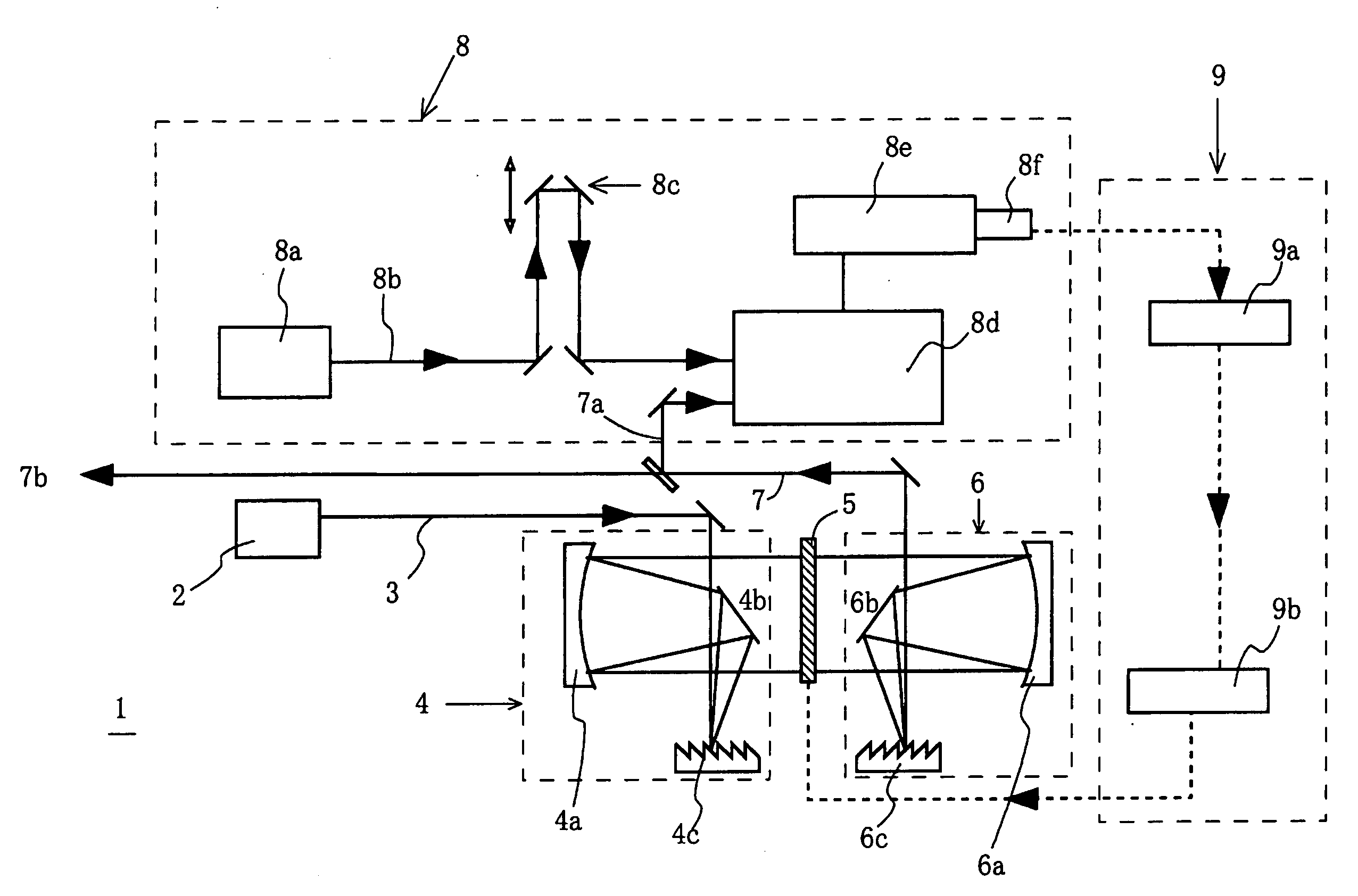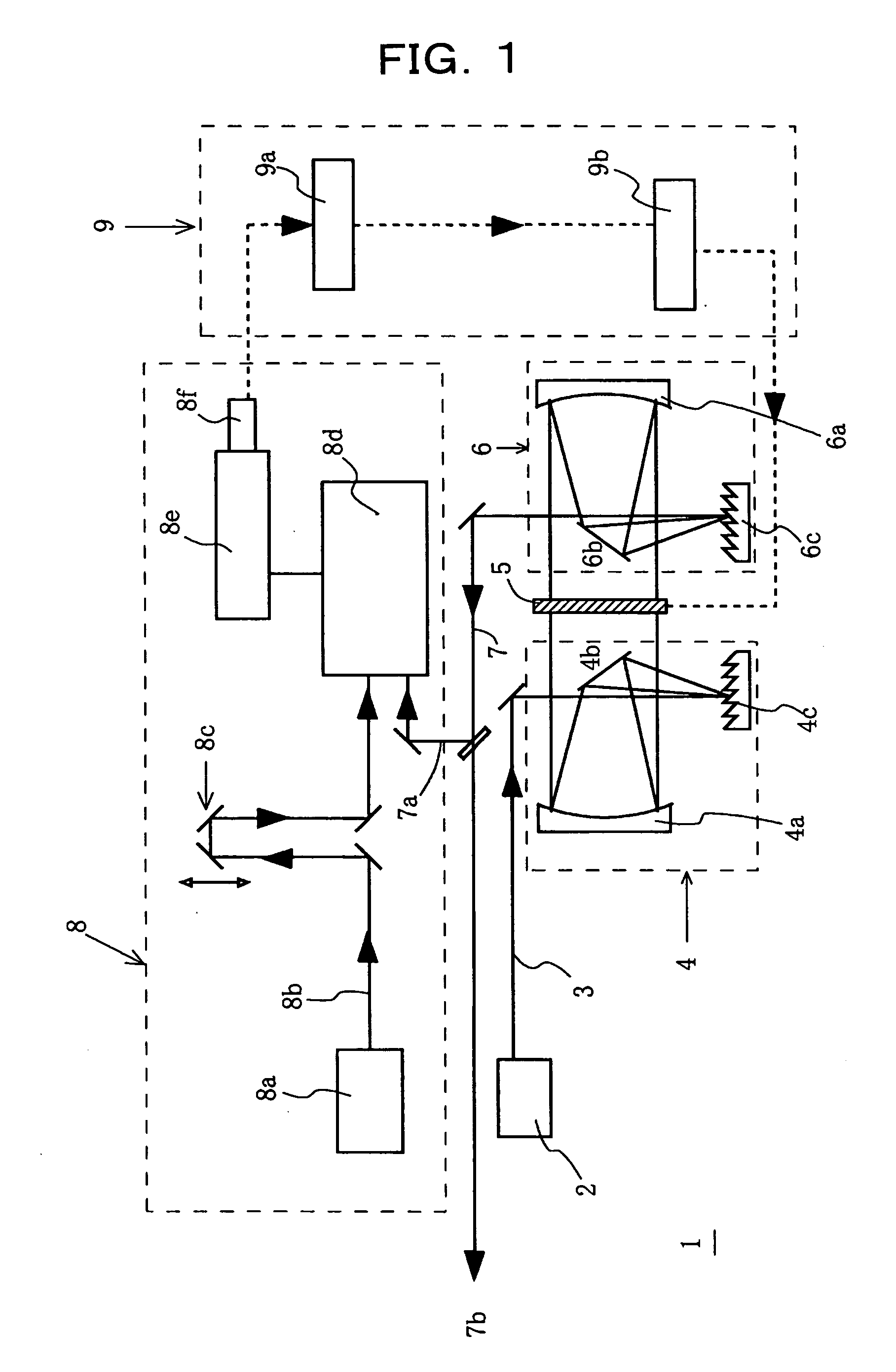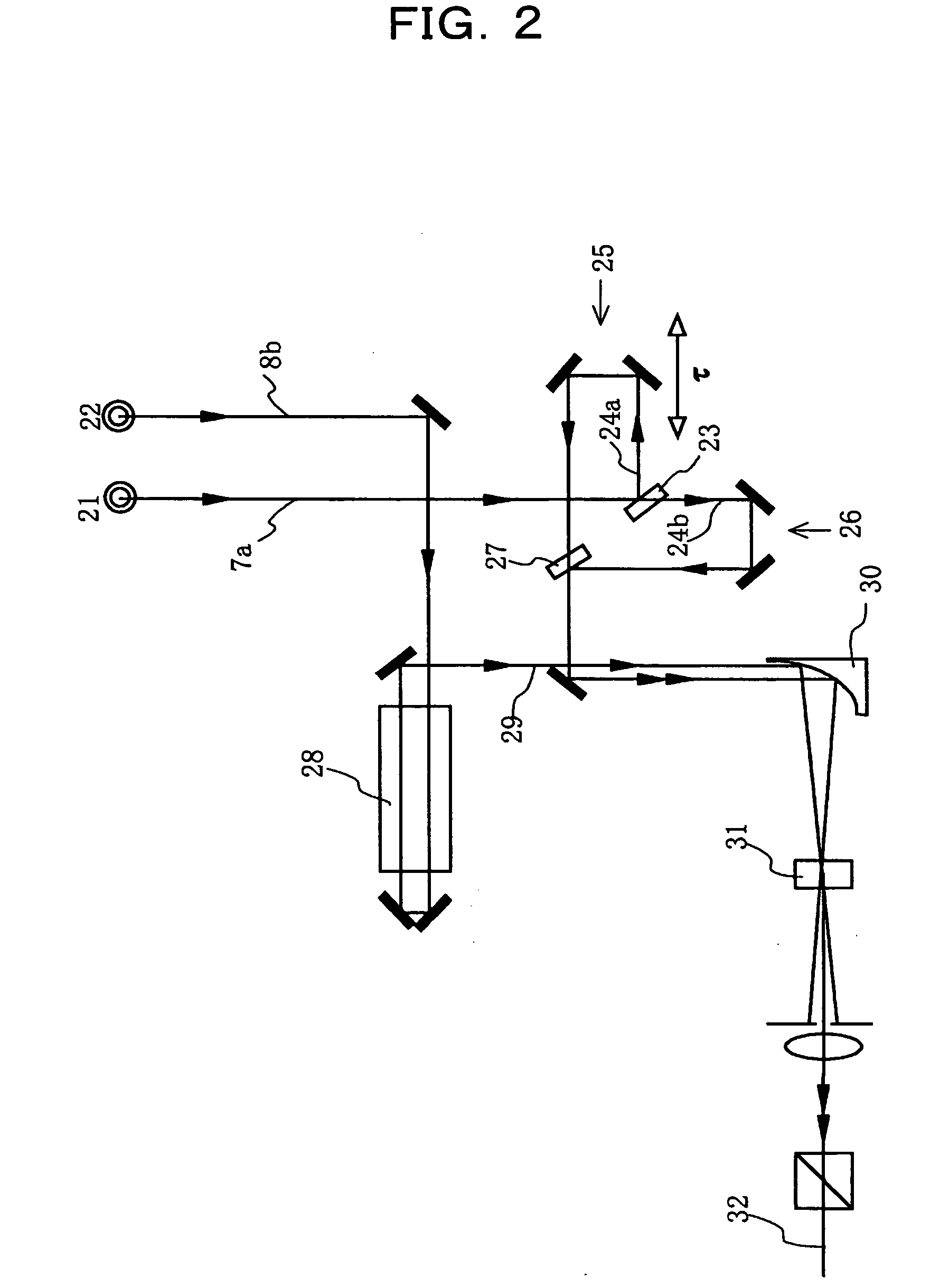Autonomous ultra-short optical pulse compression, phase compensating and waveform shaping device
- Summary
- Abstract
- Description
- Claims
- Application Information
AI Technical Summary
Benefits of technology
Problems solved by technology
Method used
Image
Examples
Embodiment Construction
[0037] Hereinafter, the present invention will be described in detail with reference to certain suitable forms of implementation thereof illustrated in the drawing figures.
[0038] Referring first to FIGS. 1 and 2, an explanation is given in respect of the makeup of an autonomous ultrashort light pulse compression, phase compensation and waveform shaping apparatus according to the present invention as well as an operation thereof.
[0039]FIG. 1 is a diagram illustrating the makeup of an autonomous ultrashort light pulse compression, phase compensation and waveform shaping apparatus according to the present invention. As shown in the Figure, the autonomous ultrashort light pulse compression, phase compensation and waveform shaping apparatus designated by reference character 1 comprises a pulsed light source 2; a spectroscopic spatial dispersing device 4 for spatially dispersing a light pulse 3 emitted from the light source 2 into spectral components thereof; a spatial light modulator 5...
PUM
 Login to View More
Login to View More Abstract
Description
Claims
Application Information
 Login to View More
Login to View More - R&D
- Intellectual Property
- Life Sciences
- Materials
- Tech Scout
- Unparalleled Data Quality
- Higher Quality Content
- 60% Fewer Hallucinations
Browse by: Latest US Patents, China's latest patents, Technical Efficacy Thesaurus, Application Domain, Technology Topic, Popular Technical Reports.
© 2025 PatSnap. All rights reserved.Legal|Privacy policy|Modern Slavery Act Transparency Statement|Sitemap|About US| Contact US: help@patsnap.com



